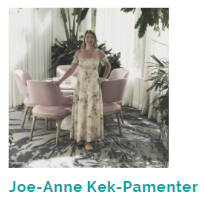JobAccess: Driving Disability Employment
JobAccess is ‘the national hub for workplace and employment information for people with disability, employers and service providers. Created by the Australian Government, it brings together the information and resources that can ‘drive disability employment’’.
With one in five Australians now living with disability and only 53% of those participating in the workforce, it is ‘a lack of awareness, exposure and understanding [that] can cause people with disability to be overlooked for employment opportunities’1. Thus, the primary function of JobAccess is to bridge this divide, by supporting both employees and employers to ensure the skills and talents of people with disability is not overlooked.
JobAccess aims to foster employment opportunities by building capacity. They also provide an employer engagement service through a National Disability Recruitment Coordinator (NDRC), provide financial support for workplace modifications through the Employment Assistance Fund (EAF), offer a complaints and referral service, and National Disability Abuse and Neglect Hotline.
The Dignity Project team spoke to some of our members about their own experiences with Job Access, including their stories and advise.

Chief Executive Officer | Enabled.VIP
I have two very positive experiences with the Job Access Network (JAN). Both times I was able to get essential gear that made a substantial difference to my work and my ability to make a significant contribution in my workplace. I think there were a few reasons they were successful for me and dealing with the challenges my disability brings:
1. Know what equipment or support you need, including any customisations you need. If you have a condition that is progressive, can you future proof it?
2. Have a supervisor who is excited by your contribution and maintaining your contribution.
3. Spend the time with your assigned disability officer, so they understand what you need, the contribution you make at work and what the gear/service will enable you to do/keep doing your work.
4. Replicate 2 and 3 with your assigned JAN Assessor.
5. Be prepared for some ongoing email/phone dialogue during the review and implementation phases.
6. After implementation, send a photo to the HR Officer and JAN Assessor of you using the kit with a very positive note – so they are allies for the future.
7. Through it all, be positive and upbeat. Be firm about your needs, but not combative.

Research Assistant, The Hopkins Centre
Community Hub Manger – The Dignity Project
I lost part of my hearing aged 16 and entered the workforce several years later after finishing my schooling. Support in the workplace was not something discussed early in my career, and I just made do as best I could, given what support, compassion and understanding was offered to me in-house. I first learned about JobAccess upon commencing employment at Griffith University (a proud, inclusive, equal opportunity employer (EEO)) when my manager asked if there was anything she could do to support me in my role – through workplace modifications and adjustments – or in terms of accessible/adaptive equipment.
With her support, I applied to JobAccess through the EAF for the purchase of Noise Cancelling Headphones to assist my ability to hear better during online team meetings (during COVID-19) and other media-based tasks. The application process was very straight forward, involving me obtaining a quote for the headphones, having my manager sign forms, which were submitted with a letter from my audiologist and copy of my audiology report. The application was approved quickly, and I received the equipment soon after.
More recently, as my role and responsibilities grew, I applied for further supports by way of adaptive equipment. I found this process to be immensely different to the first time around. There was a lot of toing and froing between multiple parties (by telephone – despite the fact I am profoundly hearing impaired 😟), filling out and submitting copious amounts of paperwork and independent reports, culminating after several months of negotiation in a visit to my place of work (remote office) by an independent assessor.
I found this process extremely exhausting, upsetting and at times degrading. The independent assessor, whilst at my home did not at any time observe or view my work or current work setup, tools or equipment – infact he did not enter my office (even though I asked him too), and instead sat in my kitchen and told me why my application would not be supported (assuming he decided this before his visit, as he was well prepared ahead of time). He did not speak to my manager or supervisors – and whilst I investigated all possible options, my claim for further supports was unfortunately declined, and remains so, despite exploring other alternatives.
My experience in this regard, was with a feeling that whilst JobAccess possibly started with good intentions, the system now seems to be working against PwD – not for them. Is this a capital savings measure versus the intention to have PwD participating fully in the workforce? It would seem to me that it is a far better option (and cheaper for the Australian taxpayer) to have PwD participating to their full capacity in the workforce and contributing to the economy, in preference to having the same people – who WANT to work – on unemployment benefits and not functioning to their full potential. This would potentially add to the Governments woes (and pocket), when the same people draw upon NDIS when their physical and mental health starts to decline, due to feelings of worthlessness, depression and anxiety.
In the research for this blog, I have spent time talking to many others who have JobAccess experience. I also waited to go through the whole process myself before I decided the time was right to publish this information. I have spoken to people who received excellent supports, and others who have not (sadly… this was the majority). It has often been the case that people with the same disability and same requirements – and even working in the same organisation and department received support, but others not. In some cases, individuals are offered beneficial high-level support and others only basic supports, some no support at all. In some cases, JobAccess passed the buck back to the employer and said it was their responsibility. Ultimately, it comes down to who your JAN co-ordinator and Independent Assessor is. Are they passionate about supporting PwD or are they focused more on cost cutting and the bottom line?
My advice to others, before navigating this tedious process, is to ensure you pre-explore all options with the assistance of a qualified and helpful Occupational Therapist or Disability/Employment support person in conjunction with your workplace manager prior to any application. Explore what types of supports you require to function to full capacity in your role, obtain quotes, reports from your doctors/therapists and any supporting evidence that can enhance your application and give you a better chance of success. Once the process has started, it is important to establish and maintain a good rapport with your JAN Co-ordinator and Assessor… Then cross your fingers. Good luck!
Have an experience you would like to share… We’d love to hear from you! Participate in the current Have Your Say Forum on Job Access, or write to us on Community Hub or via email: dignityproject@griffith.edu.au
For more information, contact the JobAccess Network:
Website: https://www.jobaccess.gov.au1
Online Enquiry Form: https://www.jobaccess.gov.au/contacts/online-enquiry-form
Phone: 1800 464 800
TTY: 1800 555 677 (Then ask for 1800 464 800)
To read the rest of this blog and others in full, visit The Dignity Project and join the Community Hub, by clicking the button that says "Join the Community Hub": http://www.hopkinscentre.edu.au/the-dignity-project

